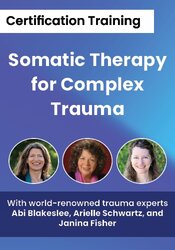A Neurobiologically-Informed Approach for Fast Trauma Treatment

Trauma isn’t just remembered. It’s relived. Our clients don’t walk into our offices struggling to recall what happened. They walk in struggling to not feel it happening all over again. That’s because trauma lives in the body. And neuroscience shows us why.
When we experience threat, our instinctive brain takes over. The amygdala activates the fight-flight-freeze response and shuts down the prefrontal cortex. Thinking goes offline. Survival kicks in. And when the traumatic experience is over? The nervous system doesn’t just forget. It gets sensitized. It learns to expect danger, even when it’s no longer there.
That’s why trauma treatment must start with the body.
It’s Not Just About Remembering—It’s About Regulation
For years, we thought healing required talking about the trauma. Putting the story into words. But as trauma-expert Bessel van der Kolk and others discovered, trauma isn’t primarily stored in the verbal memory. It’s stored implicitly in the body, in sensations, and in impulses. Our clients may say “nothing happened,” yet their nervous system tells another story. Their posture, reactivity, and emotional volatility say: “I’ve been hurt.”
So we don’t begin by asking what happened. Especially not in the first session. Especially not when the prefrontal cortex is offline.
Instead, we begin by helping clients understand what’s happening in their nervous system. We teach them that their reactions (rage, collapse, panic, dissociation) are not flaws. They’re adaptations. Their nervous system has been trying to protect them.
Our first task isn’t to excavate the trauma. It’s to build a foundation. That means:
- Psychoeducation: Give clients a map of their nervous system.
- Mindfulness: Teach them to notice their sensations, not analyze them.
- Window of Tolerance: Help them expand their capacity to feel safely.
Every Symptom Has a Story—and a Purpose
Whether a client cuts, binges, dissociates, or freezes, it’s not pathology. It’s protection. When we reframe symptoms as the nervous system’s way of finding relief or control, we shift the conversation from shame to compassion.
A client doesn’t self-harm because they want to suffer. They do it because, in that moment, it’s the only tool they have to regulate unbearable overwhelm. The goal isn’t to shame the behavior. It’s to expand their toolkit.
We ask: What was happening right before? What were you feeling in your body? What did your nervous system need in that moment? That’s where healing begins.
The Body Remembers—So We Work with the Body
Sensorimotor Psychotherapy and other body-centered approaches teach us that we can help clients regulate by working through the body. A sigh. A hand on the heart. Lengthening the spine. These small interventions can re-engage the prefrontal cortex and restore access to choice.
Trauma survivors often lose their sense of agency. We help them reclaim it—not by forcing them to “go there,” but by giving them permission not to. We say: You didn’t have a choice then. You do now.
Healing Doesn’t Require a Complete History
One of the most powerful realizations I’ve had is this: our clients don’t need to remember everything to recover. They need to change their relationship to the past. They need to become less afraid of the feelings and sensations that arise. Resolution lives in how the body holds it today.
That’s why I often work with implicit memories through the lens of parts, especially child parts. We help clients identify: Who in me feels this fear? Who in me still believes they’re unsafe? And we bring those parts into relationship with curiosity, compassion, and co-regulation.
The Nervous System Is Not Broken—It’s Brilliant
What I tell clients again and again is this: There’s nothing wrong with you. You have a nervous system that adapted to survive. That’s not a disorder. That’s brilliance.
Our job isn’t to fix our clients. It’s to help them reclaim their power. To recognize their symptoms as survival strategies. And to offer new ways of regulating that are grounded in present-day safety.
When we do this, we don’t just reduce symptoms. We help people feel whole.

Learn foundational body-based techniques, including somatic experiencing skills, breathwork, movement, polyvagal, Hakomi, neurobiological & more techniques.





